If you want to become successful in the fishing game, you must know the best strategy. But what you need the most is a perfect fish finder. Yes, a fish finder that makes your angling easier. There was a time when the anglers had to be careful to catch fish from their boats. With the evolving time and advanced technology, fish finders have made this task effortless for the anglers. It helps you to find the exact fishing areas where you can get a large number of fishes.
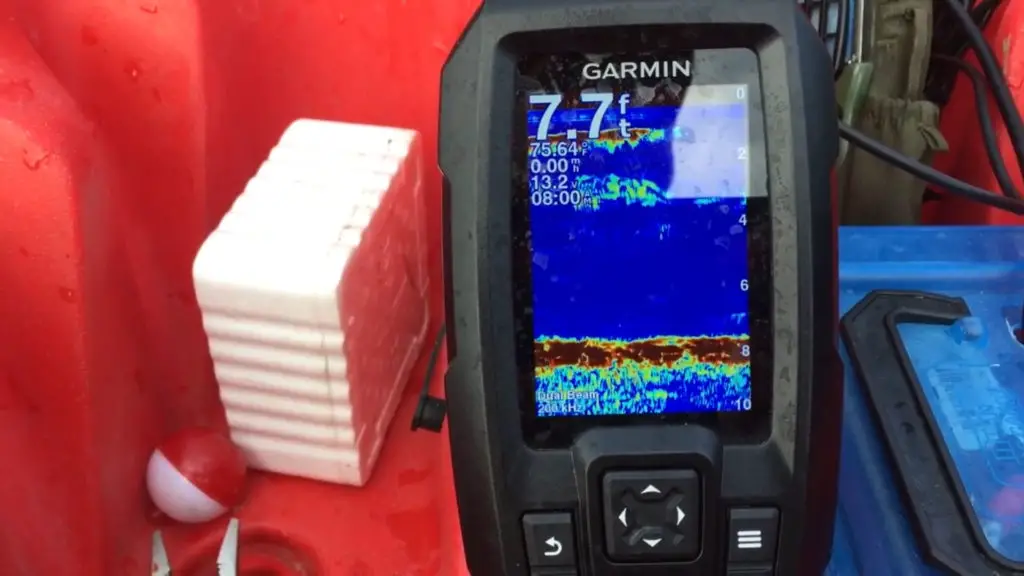
A fish finder is a piece of essential equipment for fishing that helps you to find fishes by displaying the condition of underwater surroundings. However, before buying a fish finder, you must have a comprehensive knowledge of how to read a fish finder. If you are not aware of the right way to learn a fish finder, it will not help you much in your fishing. In this article, we will try to guide you in the best possible way to read a fishfinder effectively. So go through this article attentively.
Table of Contents
- 1 How fish finder works?
- 2 Components of a fish finder screen
- 3 Step by step approach to read and use a fish finder
- 3.1 1. Understanding the visual data on the screen
- 3.2 2. Identifying fish
- 3.3 3. Fish icons
- 3.4 4. Fish arches
- 3.5 5. Fish size determination
- 3.6 6. Length of the fish arch
- 3.7 7. Width of the arch
- 3.8 8. Half or full arches
- 3.9 9. Hunting for trophy fish and baitfish on your fish finder
- 3.10 10. Identifying different underwater structures
- 3.11 11. Underwater Vegetation
- 3.12 12. Depression
- 3.13 13. Points
- 3.14 14. Determining the types of the bottom surface
- 3.15 15. Thickness
- 3.16 16. Color and 2D Returns
- 4 Reading Different Types of FishFinders [Bonus Part]
- 5 With what all can we use fish finders
- 6 Ten tips for reading a fish finder
- 6.1 1. Go through the manual
- 6.2 2. Understand your model
- 6.3 3. Start with a familiar area
- 6.4 4. Identify the objects
- 6.5 5. Use the chart plotter function
- 6.6 6. Adjust the display settings
- 6.7 7. Select a suitable color palette
- 6.8 8. Adjust the speed
- 6.9 9. Choose a proper range of the transducer
- 6.10 10. Increase the sensitivity of the transducer
- 7 Main Precautions To Take Care
- 8 Final Thoughts
How fish finder works?
A fish finder is used in finding out the underwater objects and bottom structure at the time of fishing. This electronic equipment works with the help of Sonar technology. You can quickly get the best GPS fish finder in the market that ensures maximum accuracy with advanced GPS devices. The transducer plays a significant role in finding out the fishes from deep water because it has a direct connection to the water.
Sometimes, the transducer is placed to the bottom of a boat to quickly provide detailed information about underwater surroundings.
The best fish finder has the best transducer working like the eye of the device. The transducer releases an electronic wave, and if it comes up against any object underwater, the receiver will get a signal. You can have an idea of the object from the strength and time taken by the signal.
Also, the software is used to turn the signal into an image. Several colorful bobs, lines, etc. are displayed. So you must know how to read a fish finder to detect the right fishing position from those images.
Components of a fish finder screen
Using a fish finder can be a very effective method to have an enjoyable fishing experience. Still, it will be only possible when you know how to read a fish finder correctly. Reading a fish finder screen is not an easy task because it has become popular in the past few years.
It never matters how expensive your fish finder is, until and unless you have the skills to understand the information displayed on the screen.
All the fish finders work with SONAR technology, which is a new invention. So it is better to have proper knowledge of the components of the fish finder screen in advance. Know the essential elements of a fish finder—
1. Transducer
- We have already said that a fish finder works with the sensor’s help that releases SONAR waves. It is mostly attached to the bottom of the boats to be placed under the water. The electrical waves emitted from the transducer return back to the receiver after encounters with any underwater objects.
It allows the transducer to read the depth and temperature of the water as well as the speed of the waves. Then this information is transformed into images that show some colorful lines and arches on the display screen. - Different models are displayed for different objects. The best fish finder GPS combo has a modern feature called depth finder. It helps you to understand the depth of the water under your fishing boat. You can have a clear idea about the underwater surroundings from the bottom of the water.
- Also, you can view the temperature range of the water. Many fishes stay in warm water while some other fishes like cold environments. So you can easily find out specific species using these advanced features.
- The speed sensor is another essential feature of the fish finder screens that informs about the speed of your boat with accuracy. If you understand all these fish finders’ features, you will become an experienced angler within a short period.
2. Color ?
- If you want to learn how to read a fishfinder, you must pay attention to the colors. Generally, there are two types of fish finders available in the market, including the color and grayscale fish finders.
- Greyscale fish finders are also known as the black and white fish finders. The color usually depends on the strength of the echo received by the transducer. The density of the water and the hardness of the underwater objects also play an essential role in determining the echo strength. When you see a darker color on the fish finder screen, it will imply that the echo is powerful.
- Most of the time, the bottom of the water body, whether it is a river or a lake, shows the darkest color. You can see either a thick line or a thin line while fishing in such areas. A thin, light line means you have encountered a softer surface made of clay. But when you see a thick and bold line, know that the ground material is harder and less porous.
- The best portable fish finder should have the best quality screen resolution to make sure that you get all the right information about the fishing areas. You should always give importance to the smaller details so that you can catch more fish efficiently.
3. Display ?️
- The color and the display of the fish finders matters a lot when it comes to the best quality fish finders. The screen is essential for the fish finders because it enables you to interpret the results accurately. So initially, you should set up your fishfinder to move comfortably around your favorite fishing areas.
- Display under 4″ to 10″ is ideal for a fish finder screen because always remember that larger screens provide more information. So you should choose the display according to the requirements of your fishing. Once you are satisfied with the size of the screen, try to find out a comfortable speed and get familiar with the entire process.
- Usually, the fish finder works compatible with lower speed, but you can see different results at a different speed for many fish finders. It depends on the SONAR waves and underwater objects. Once you have come to know how to handle the screen and set an optimal speed, you will get one step closer to success.
- Keep in mind that the fish finder shows the right to left direction, and you will find the newest results on the extreme right corner of the screen. So, automatically the oldest results will be at the left corner. It displays stable images when your boat is not moving.
- Once you start moving, you will be able to see the objects below the transducer through the display screen. The result will pass from right to left. You are allowed to zoom in when you want to have a closer look at a particular fishing area and see the objects below your boats directly.
4. Fish ID ?
- To know how to read a fish finder, you must have in-depth knowledge of the Fish ID technology. Now that you have already got the idea of color and display, we will focus on this outstanding feature of the fish finders that will help you to understand how the fish, objects, bottom structures look on the display.
- When the SONAR waves go back to the transducer, the fish finder can display in two different ways. It will show the raw data otherwise. The little lines and arches will be transformed into small icons different from each other, according to the objects in the water.
- This Fish ID technology is used in converting the raw data into a less complicated interface, which is also easy to use. It will show fish icons around the fishing areas, and the size of the image depends on the fish size detected by the device.
- Many fish finders use different symbols for different underwater objects such as fish, rock, corals, plants, etc. So you must pay more attention to the icons displayed on the screen to collect more information about it. It will also help you to find out the specific species of fishes in a particular region.
- Though the accuracy of this Fish ID technology is not above doubts, this advanced technological feature will help you to detect a school of fish in less time. So, if you want to concentrate more on fishing rather than learning, you should look for the best fish finder available with this technology.
Step by step approach to read and use a fish finder
Now we have come to the most crucial part of this article, where we will talk about how to read a fish finder in an efficient way. Especially if you are a beginner, this guide will help you a lot to locate fish in a significant way. Without reading the fish finder screen correctly, you are not able to be a good angler. So have a look at this step by step guide to know the right approach to read a fishfinder.
1. Understanding the visual data on the screen
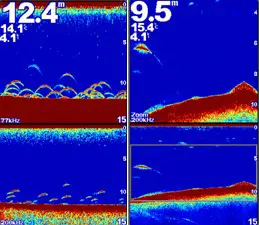
A good fish finder helps you to observe the bottom structure as well as it shows you the place where you can find a large school of fish. Usually, SONAR technology is used to make an image in the water, and you will get a little bottom coverage in return. You just need to learn a few tricks to read the screen properly, even if you do not get the best results from the SONAR coverage.
2. Identifying fish
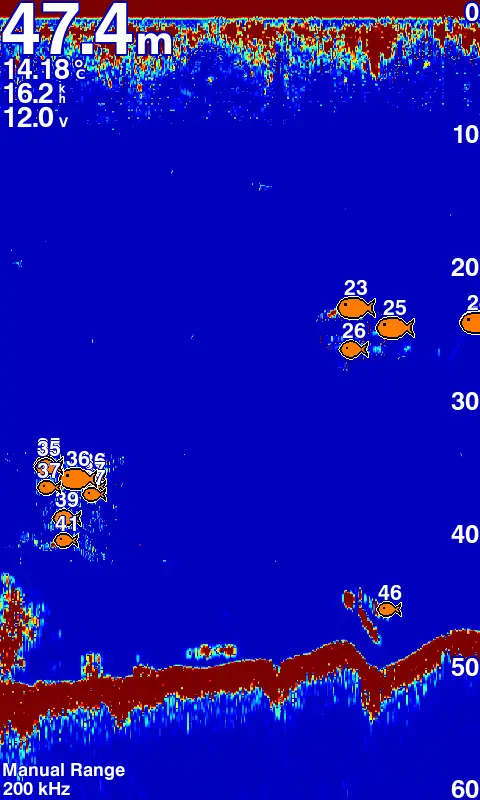
In the very beginning, you must learn how to detect and identify fish. Nowadays, most of the fish finders use Fish ID technology, which makes it easier to locate dense fishing areas. With this advanced technology, the raw data is converted into a useful interface that helps you to understand what is underneath your boat.
3. Fish icons
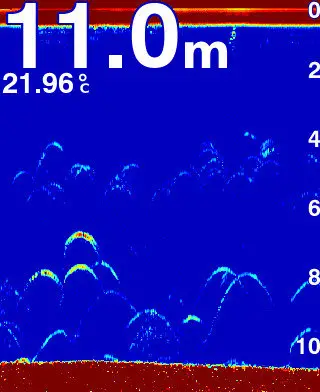
If you look for the best Humminbird fish finder, you will have the small fish icons that come up with multiple lengths and sizes. You can easily distinguish the fish, rock, plankton, etc. with this Fish ID technology.
All you need is to read the icons carefully and try to interpret the meaning of those icons. Sometimes the Fish ID shows the fish, which is actually a group of plankton. So you should be a little aware of this downside of Fish ID and practice thoroughly to get used to with these icons.
4. Fish arches
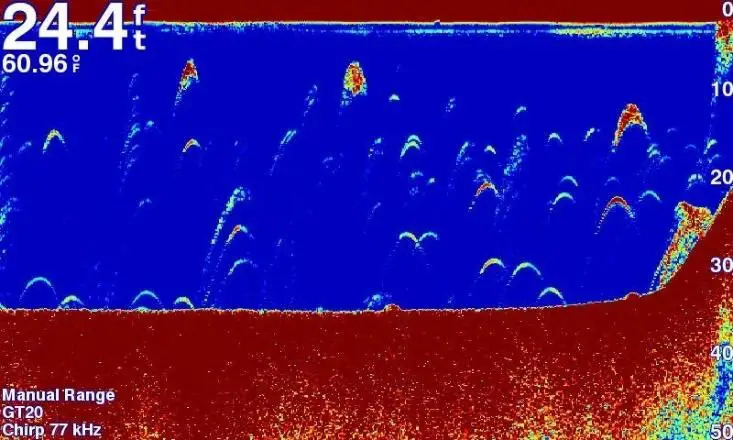
In case you are using an arch fish finder, you will receive lines and arches on the screen. Once you get familiar with the working of this kind of fish finders, you will not have to waste time moving aimlessly.
Here the arches show the fish, which is more precise than Fish ID. Always remember, smaller arches represent smaller fish, and more prominent arches help you to detect bigger fish. Initially, you may find it a little challenging to identify the rocks and other objects from the arches, but with practice, you will be able to understand the underwater structures and objects from the images so that they catch fish according to their size and region.
5. Fish size determination
Generally, more prominent arches represent a bigger fish, but you need to know this in more detail. There are so many other factors like thickness, lengths, etc. that play an essential role in determining the fish size.
6. Length of the fish arch
Long fish arch does not always mean a big fish. Some anglers make a mistake with the extended arches, but it should actually be measured as time. The length of the arches implies that whatever is being displayed on the screen of your fish finder depends on your position. If your fish finder bumps into a motionless fish, the display will show a continuous line. You can not determine the size of the fish from this line.
When the transducer of your fish finder detects two fishes swimming through the SONAR cone at a different speed, it will show different lines having different lengths. You will see a long line for the fish moving at a slower pace, and the fish with faster speed will display a short line. So it is clear that the length of the arches actually does not matter. Long fish arch does not always represent a big fish.
7. Width of the arch
If you look at the width of the fish arches displayed on your screen, you will have an idea about the size of the fish. Your fishfinder will tell you the total arch width of the fish. The trick is to focus on the thickness of the arches rather than their sizes. In case of a full arch return, you will get a chance to catch a big fish. Always pay attention to the thickest arch line to find out the biggest fish from a school of fish.
8. Half or full arches
Your fish finder can show both full arches and half arches. The best Lowrance fish finder shows these arches accurately. When a fish swims around the entire SONAR cone, it shows a full arch. On the other hand, when a fish swims through a little part of the SONAR cone, you can see a half arch on the fish finder screen.
However, a half arch also can represent a big fish. There is no point in thinking a half arch as a small fish. So, again it is suggested to check the thickness of the arches instead of the size to catch more fish effectively.
9. Hunting for trophy fish and baitfish on your fish finder
The best way to locate a big fish is to observe the thickness of the fish arches. Do not give much importance to the fullness of the arch because sometimes, half arches also show a big fish. Concentrate on the width to spot a trophy fish easily.
In the case of baitfish, you will see some dots or dashes on the screen. Often it shows some even lines as well. You can find a group of bait in balls that remain suspended underwater. Look for the yellow color to detect the baitfish easily.
10. Identifying different underwater structures
It is also essential to know the underwater structures when you want to learn how to read a fish finder. If you have a proper understanding of the marine structures, you can easily mark dense fishing areas. It is available with the depth finder, which is undoubtedly an excellent feature of a fish finder.
The depth finder is connected to the transducer, and it provides you all the information about the depth of water under your vessel. You can know what types of fish are available in a particular river. You will see the depth finder feature on the top left on your fish finder screen. It measures the depth in meters in the place of feet.
The depth finder not only does tell about the depth of the water but also gives information about the water temperature. It allows you to have an idea about the type of fish you can find around that specific region. Make sure that you always maintain a low speed to get an appropriate view of the bottom surface.
You can avoid the “dead zones” with this. If you have the best fish finder with map, you are allowed to make an underwater map with different color contours. It will help you to display the depth and the most suitable fishing spots under your boats.
11. Underwater Vegetation
Most of the experienced anglers try to look for the vegetation and weeds underwater because this type of area can attract a lot of fish. When you encounter an area full of vegetation your fish finder screen will display vertical lines on the screen.
12. Depression
You will find a small, v-shape dip in the bottom contour that represents depression. If you are going for carp fishing, pay attention to this for detecting the depression.
13. Points
You can easily spot points. Make sure that you are moving steadily to get the correct reading of the incline. Always use a narrow SONAR beam that can read the hump and shelf accurately.
14. Determining the types of the bottom surface
You must be skilled enough to read a 2D SONAR fish finder to understand the type and hardness of the bottom surface under your boat.
15. Thickness
When your fish finder releases a louder echo, you can see a bold line on the display. It means that the bottom surface is less porous and much harder. Similarly, if the transducer shows a thin line, it indicates a softer surface material like clay.
16. Color and 2D Returns
As we have said that the fish finder can be colored or black and white (greyscale), the results displayed on the screen also differ according to the models. Like for colored fish finder, you will see a dark color for powerful echoes emitted by the transducer.
Reading Different Types of FishFinders [Bonus Part]
It is time for some extra things to take care about! We have added this additional section to aid you in finding all the right steps to read different types of fishfinders in no time. Keep reading further to know more:
How can you easily read the best Lowrance fishfinder?
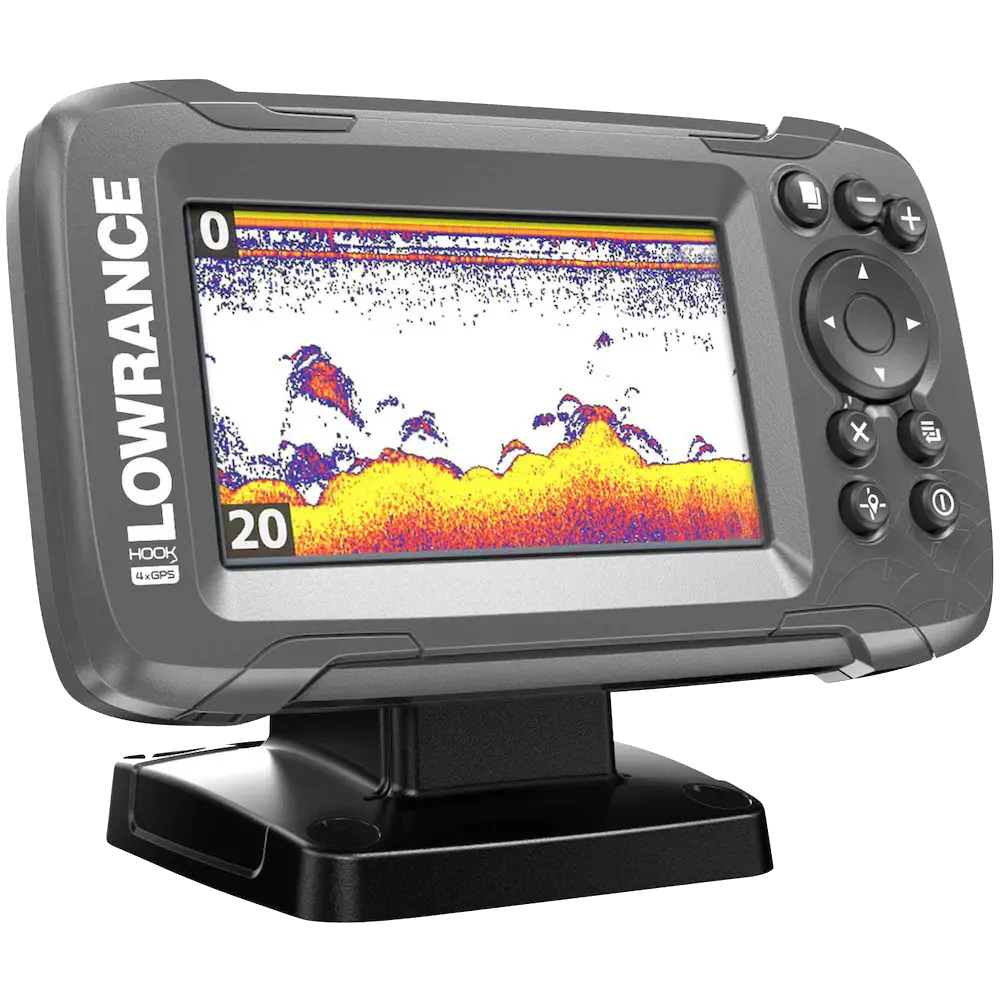
You just need to follow some simple steps to read the screen successfully.
- At first, you have to understand the fish size on SONAR. The size of the fish differs according to depth or sensitivity. Also, the color and the width of the arch can indicate the size of the fish.
- You have to understand the down scan and side scan to catch fish in a more efficient way.
- Lowrance 3D structure scan is used to locate the crappie suspended underwater. It also provides the image of fish in the water column.
- Lowrance trackback memory helps to restore the disappeared images. It allows you to find the right spot for your fishing.
- The Lowrance GPS works with the help of satellites, so it always ensures an accurate result.
How can you easily read the best Garmin fishfinder?
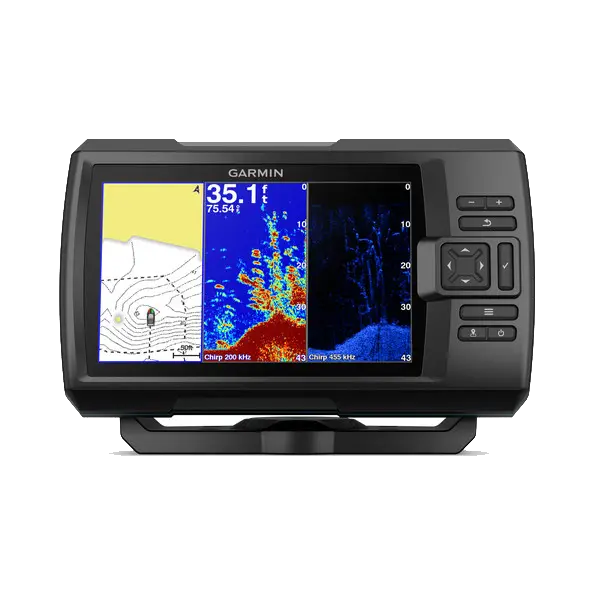
- Garmin fish finder will be ideal for you if you are in search of a portable fish finder. It has several unique features that are essential for successful fishing.
- You have to know how to read the device to use it in a correct way.
- Three types of SONAR is used here that can easily distinguish between the targeted fish and underwater objects. Also, the images displayed on the screen do not have much clutter. It uses a higher CHIRP frequency that helps to understand the depth of the water in less time. It also provides a more precise image so that you can understand what is there underneath your boat.
How to read the best Humminbird fishfinder?
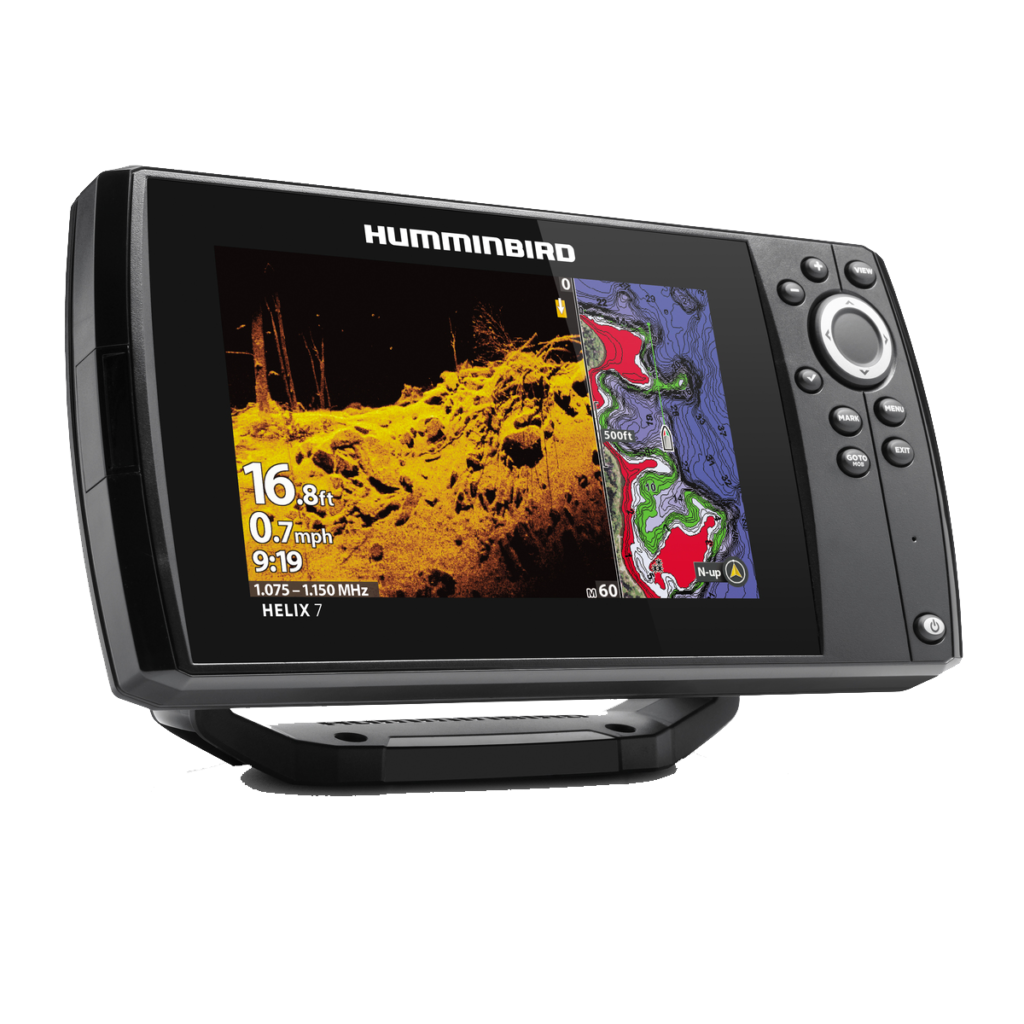
It is not so difficult to read a Humminbird fishfinder screen. It works in a straightforward way with the help of a simple interface. You can read the visual data on the screen through graphical or numerical representation.
Even if you are a beginner, you will not find this fish finder screen challenging to read. Besides the depth of the water, it also provides transparent information about the bottom structures. It can also measure water temperature effectively.
How to read a Simrad fish finder?
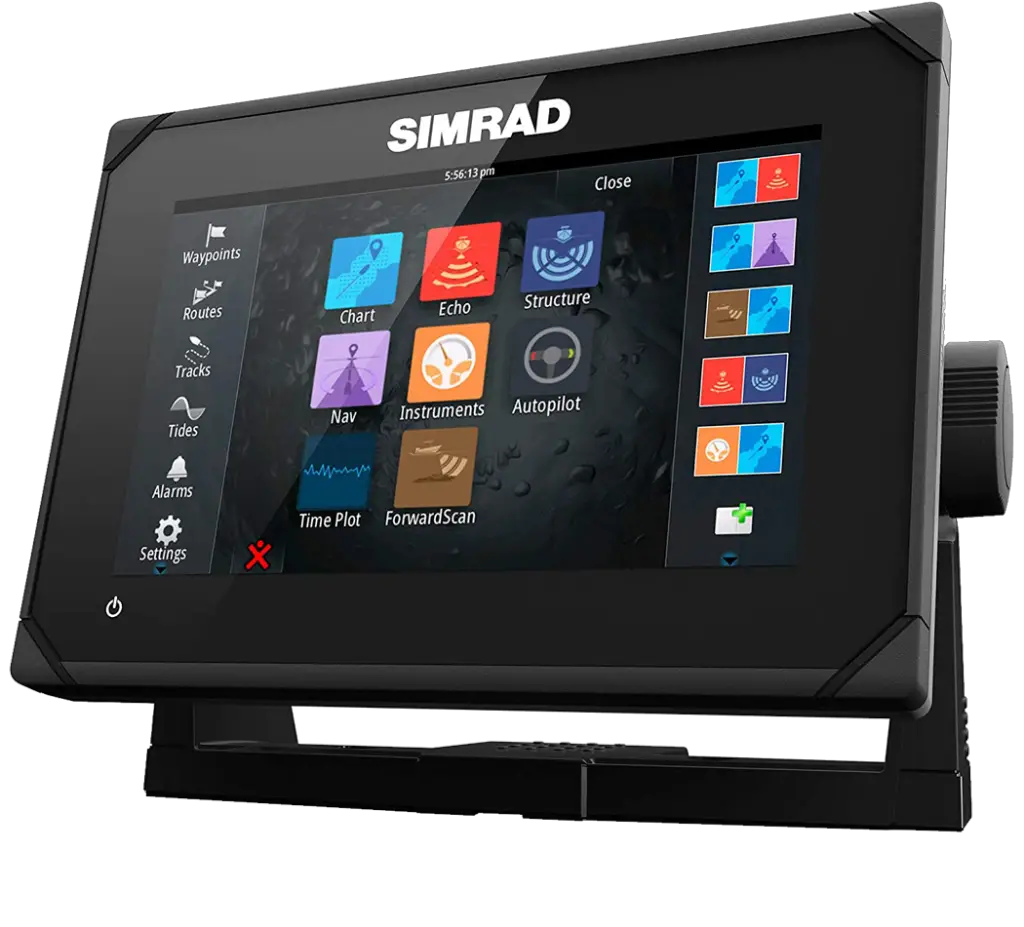
The Simrad fish finder has a unique design that comes with a touchscreen working faster than Lowrance or Garmin. It also has advanced features like Rader, ForwardScan, Triplentel, etc. so that you can have a great fishing game.
With what all can we use fish finders
Now that you have already come to know about how to read a fish finder, this is the right time to talk about the types of fish finders. To be more specific, you will get to know various kinds of fish finders and how they work on different vessels.
1. Standalone
This type of fish finder is absolutely perfect for fishing on inland lakes. Anglers who have a modest-sized vessel can smoothly go for this fish finder. It will be solid as well as an economical choice for the fishermen. You will get all the information that is going on under the water in detail, and it will surely make your fishing game easier.
2. GPS Combo
This type of fish finder has the best marine GPS, which helps you to navigate correctly. So, if you have a medium-sized vessel and your target is to buy a fish finder with the best navigation facilities, you can easily rely on this fish finder. The best thing about this fish finder is that the display shows both the GPS and SONAR simultaneously.
3. Networked
This type of fish finder can be used in any kind of boats because it is available with several advanced features, including GPS, Rader, SiriusXM Video, and more.
4. CHIRP
The best Garmin fish finders work with this CHIRP technology, which can release comparatively lengthier waves. Therefore it can provide tremendous energy that is 50 times more than the usual waves. So with this broadband version, you can effectively get better images with every little detail even if you are fishing from your kayak. It has a high-frequency capacity.
5. Portable
It is specially designed for the fishing-enthusiasts who look for a more straightforward fish finder that is transportable. It has the display unit, a transducer, a mounting part, and a battery. The newest portable fish finder is renowned as a castable that you can control by an app via Bluetooth or Wi-Fi.
6. Ice Fish Finder
The best ice fishing fish finder has flashers, and it shows what is going on underwater through a graphical representation. Also, you can have a real view with the help of flashier ice fish finders.
Ten tips for reading a fish finder
Be it a pro or amateur, if you are looking for the best tips to read a fish finder, we have got you covered! Check out the top 10 tips to know how to read a fish finder –
1. Go through the manual
Most of the time, we do not give much importance to this part, but you should read the manual thoroughly to become familiar with the fish finder. Some features are not so difficult to learn and practice. However, if you have any doubts or questions regarding the use of your fish finder, you must take help from the manual every time.
2. Understand your model
You should have an in-depth knowledge of the model of fish finder that you are using. In the case of down imaging mode, you should read the screen from right to left. The most recent information is found on the right corner of the display. When you use your fish finder inside imaging mode, go through it from top to bottom.
3. Start with a familiar area
Initially, use your fish finder around an area that is already known to you. It will help you to learn the functions more efficiently.
4. Identify the objects
If you are using the best kayak fish finder, try to identify different purposes from the display. Small patches or bobs mean small fish while the large arch or dots are shown for larger fish.
5. Use the chart plotter function
It is better to use the chart plotter function to mark your favorite fishing areas on the chart plotter, and you can visit those areas later. In case you have a separate chart plotter and fish finder, you can mark the waypoints on the chart plotter for a specific fishing region.
6. Adjust the display settings
You can always zoom in the display screen to detect the activity of the fish in a particular area. It will also provide you with clearer images with more little details.
7. Select a suitable color palette
If your display shows black letters on the white background, you can read the results effortlessly. On the other hand, if you use a different color to detect the fishing areas, it will help you to distinguish the school of fish from other underwater objects.
8. Adjust the speed
Increasing the speed is important in order to receive data from your device quickly. Low update speed data refers to data from the past, and high update speed data shows the most recent information.
9. Choose a proper range of the transducer
If the transducer has the best handheld marine GPS, you should set the data range three times the water depth. It depends on the model of fish finder you are using. But you can adjust the range from the setting menu of the fish finders. You can read Garmin striker 4cv review, Garmin striker plus 5cv review, Lowrance HDS 7 Gen 3 Review for yourself to choose the best one for fishing.
10. Increase the sensitivity of the transducer
Though it depends on the particular model you are using, you can adjust the sensitivity from the settings menu or just by using the buttons alongside. Do not continue increasing the sensitivity after you notice a second reading.
Main Precautions To Take Care
Besides knowing how to read a fish finder, you should also know the guidelines that tell you how you can get clearer images using your fishfinder. With the help of advanced technology, the modern fish finders are equipped well to display the images of underwater surroundings in detail.
You do not have to put much effort into getting the appropriate results. These computer chips and software can determine with efficiency which signals are important to display and which are not. However, they also fail to work sometimes, and as a result, you get clutter on the screen. In order to avoid all these issues, you must know the right way to tune your fish finders.
- Make sure that every time you are starting off your fish finder at the beginning of a day, it is kept in auto mode. Do not change it in even poor conditions such as water full of suspended solids or turbulence. You will definitely get a better start with this auto mode.
- Your fishfinder should have Sensitivity Time Control or STC that functions as a short-range filter. Using this STC, you can remove the clutter on your fish finder screen. There are so many reasons, including air bubbles, large plankton, or algae, that can create surface clutter. But it increases the possibility of finding a large amount of fish near this area having high surface clutter. Do not worry every time you notice the surface clutter.
- If you have the best fish finder, it will be easier for you to change the unit manually according to your needs. Initially, follow the traditional method to adjust the sensitivity, and you should stop increasing the sensitivity when a second reading appears on the screen. It gives you a good starting point. You can use the STC setting in case you find more clutter at the top. Otherwise, leave it like this.
- You should not tune out the faint lines for consistent depth. It happens because of the thermoclines instead of surface clutter. Thermoclines are formed because of the difference in temperature in two different layers. Either it shows a thick line or some dots together in a line. If you check the thermocline lines carefully, it will help you to find out more fish around them.
- The hard bottom surface shows a thin line that may happen because the SONAR waves can not reach deeper underwater. But the soft bottom surface releases a thick return that displays a strong line on the fish finder screen. So, you may make some experiments just to learn how the on-screen changes act in reality.
- Using a zoom function is a better way to have clearer undersea images. Your LCD display does not have enough pixels, so when it goes deeper, the bottom structure, fish and other items get merged with each other on the screen. But when you zoom in, you will get a clear image with every small detail, depending on the resolution of your screen.
Final Thoughts
Throughout this article, we have tried to focus on guiding you on how to read a fish finder. Needless to say that the fish finder has become a very useful device that helps the anglers and fishers to catch fish without much trouble.
It not only does increase the chances of better fishing but also ensures an enjoyable fishing experience for the fishing-enthusiasts. Reading the fish finder screen in an accurate way will help you to become an experienced angler. All you need to do is to learn and practice with your model to obtain more skills.
You can buy the top quality fish finders that meet all your requirements from the best fish finder app. However, you must have the knowledge to interpret the data displaying on your fish finder screen to catch fish successfully.
So do not waste much time and buy the best GPS fish finder to experience a better fishing game. We hope that this article has pondered all the necessary aspects of reading a fish finder, and it is helpful enough for you to get the required knowledge on it. So, quickly follow all the instructions and enjoy your fishing happily.